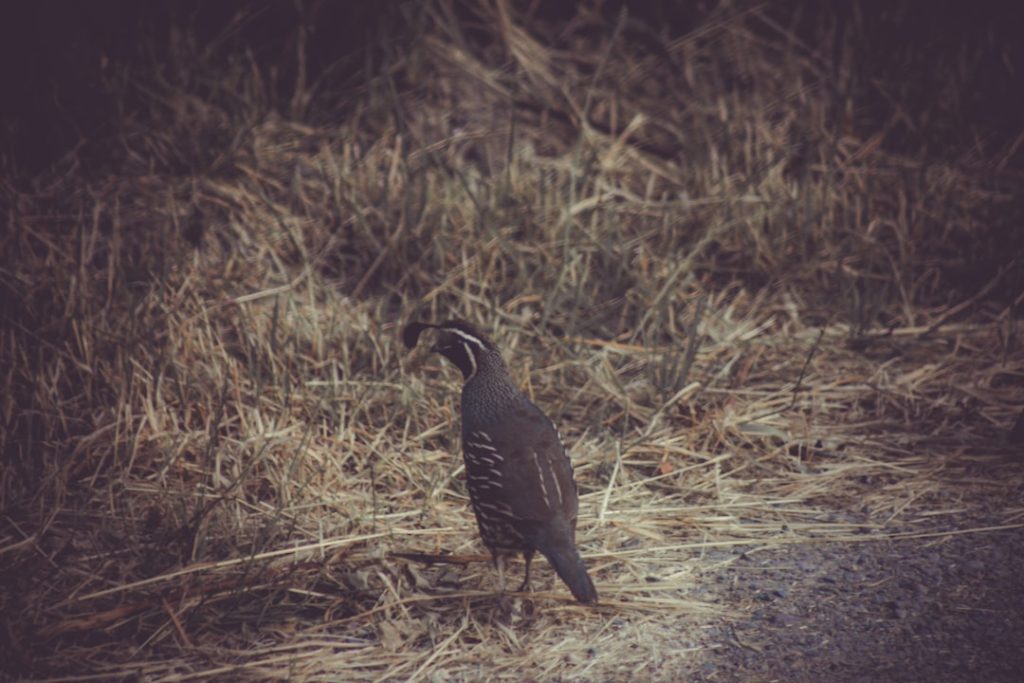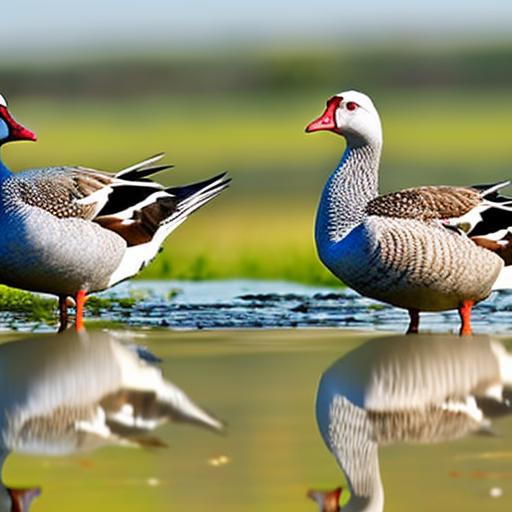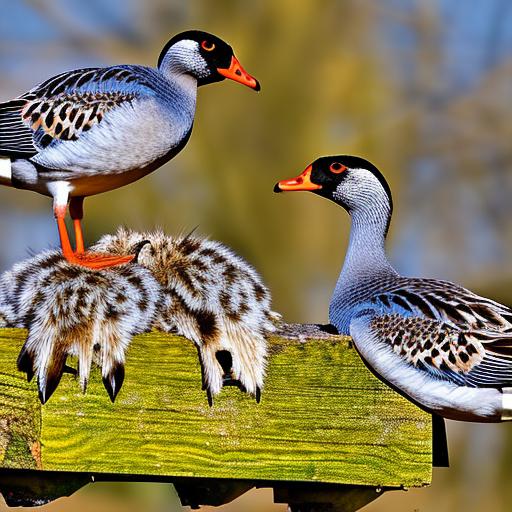Quail breeding cage size is a critical factor in the successful breeding and raising of quails. The size of the cage directly impacts the health, well-being, and productivity of the quails. Inadequate cage size can lead to stress, aggression, and reduced egg production, while the right size can promote healthy growth and optimal breeding conditions. Understanding the importance of quail breeding cage size is essential for any quail breeder looking to maximize their productivity and ensure the well-being of their birds.
The size of the cage directly impacts the behavior and physiology of quails. In a small cage, quails may experience stress and exhibit aggressive behaviors due to limited space. This can lead to injuries and reduced egg production. On the other hand, a larger cage provides quails with the space they need to move around, exercise, and exhibit natural behaviors. This can lead to reduced stress, improved health, and increased productivity. Additionally, the size of the cage can impact the cleanliness and hygiene of the environment. A larger cage allows for better air circulation and easier waste management, reducing the risk of disease and promoting overall health. Therefore, understanding the importance of quail breeding cage size is crucial for creating a healthy and productive breeding environment for quails.
Table of Contents
- 1 Determining the Ideal Cage Size for Jumbo Cortunix Quails
- 2 Factors to Consider When Choosing Cage Size for Quail Breeding
- 3 The Impact of Cage Size on Quail Health and Productivity
- 4 Tips for Designing and Setting Up Quail Breeding Cages
- 5 Common Mistakes to Avoid When Selecting Cage Size for Quail Breeding
- 6 Ensuring Optimal Cage Size for Successful Quail Breeding
- 7 FAQs
- 7.1 What is the recommended cage size for breeding jumbo cortunix quails?
- 7.2 Why is cage size important for breeding quails?
- 7.3 What are the dimensions of a suitable breeding cage for jumbo cortunix quails?
- 7.4 How many quails can be housed in a breeding cage of the recommended size?
- 7.5 What are the benefits of providing the recommended cage size for breeding quails?
Key Takeaways
- Quail breeding cage size is crucial for the health and productivity of quails.
- The ideal cage size for Jumbo Cortunix quails is at least 1 square foot per bird.
- Factors to consider when choosing cage size include the number of quails, their size, and the breeding purpose.
- Cage size can impact quail health and productivity, affecting egg production and overall well-being.
- When designing and setting up quail breeding cages, consider ventilation, cleanliness, and ease of access for maintenance.
Determining the Ideal Cage Size for Jumbo Cortunix Quails
When determining the ideal cage size for Jumbo Cortunix quails, it is important to consider their specific needs and behaviors. Jumbo Cortunix quails are larger than standard quail breeds, so they require more space to move around comfortably. The ideal cage size for Jumbo Cortunix quails is at least 1 square foot of floor space per bird. This allows them to move around, exercise, and exhibit natural behaviors without feeling cramped or stressed. Additionally, providing vertical space for Jumbo Cortunix quails is important, as they are known to be good flyers. A cage height of at least 8 inches is recommended to accommodate their natural behaviors.
It is also important to consider the breeding and egg-laying behavior of Jumbo Cortunix quails when determining cage size. Providing nesting boxes or areas within the cage is essential for their reproductive needs. Each nesting box should have enough space for a quail to comfortably enter, turn around, and lay eggs. The ideal size for a nesting box is at least 6×6 inches in floor space and 6 inches in height. By considering the specific needs and behaviors of Jumbo Cortunix quails, breeders can determine the ideal cage size to promote their health, well-being, and productivity.
Factors to Consider When Choosing Cage Size for Quail Breeding
When choosing cage size for quail breeding, there are several factors that breeders should consider to ensure the well-being and productivity of their birds. The number of quails being housed in the cage is a crucial factor in determining the appropriate size. Overcrowding can lead to stress, aggression, and reduced productivity, so it is important to provide enough space for each bird to move around comfortably. Additionally, considering the specific breed of quail is important, as different breeds have different space requirements based on their size and behaviors.
The age and reproductive status of the quails should also be taken into account when choosing cage size. Breeding pairs or groups of quails will require additional space for nesting boxes and reproductive behaviors. Young quails may require less space initially but will need larger cages as they grow. Furthermore, considering the layout and design of the cage is important for promoting natural behaviors and reducing stress. Providing perches, hiding spots, and areas for dust bathing can help create a more enriching environment for the quails. By considering these factors when choosing cage size for quail breeding, breeders can create a healthy and productive environment for their birds.
The Impact of Cage Size on Quail Health and Productivity
The impact of cage size on quail health and productivity is significant and should not be underestimated by breeders. Inadequate cage size can lead to a range of health issues for quails, including stress, aggression, feather picking, and reduced egg production. Quails that are housed in small cages may exhibit abnormal behaviors such as pacing, pecking at each other, or refusing to lay eggs. These behaviors can have a negative impact on their overall health and well-being.
On the other hand, providing quails with an appropriate cage size can have a positive impact on their health and productivity. Quails that have enough space to move around and exhibit natural behaviors are less likely to experience stress or develop health issues. They are also more likely to lay eggs regularly and at a higher rate. Additionally, providing adequate space can reduce the risk of injuries and promote overall physical health in quails. Therefore, it is crucial for breeders to understand the impact of cage size on quail health and productivity in order to create an optimal breeding environment.
Tips for Designing and Setting Up Quail Breeding Cages
When designing and setting up quail breeding cages, there are several tips that breeders should keep in mind to ensure the well-being and productivity of their birds. Firstly, it is important to choose a cage material that is durable, easy to clean, and provides good ventilation. Wire cages are commonly used for quail breeding as they meet these criteria and allow for easy waste management. Additionally, providing a solid floor or adding a layer of bedding can help prevent foot injuries in quails.
Creating a layout that promotes natural behaviors is essential for designing quail breeding cages. This includes providing perches or platforms for roosting, nesting boxes for egg-laying, and areas for dust bathing. These features help create a more enriching environment for the quails and reduce stress. It is also important to consider the placement of feeders and waterers within the cage to ensure easy access for all birds.
When setting up quail breeding cages, it is important to regularly monitor the cleanliness and hygiene of the environment. Regular cleaning and waste management are essential for preventing disease and promoting overall health in quails. Additionally, providing adequate lighting and temperature control within the breeding area can help promote healthy growth and reproductive behaviors in quails. By following these tips for designing and setting up quail breeding cages, breeders can create an optimal environment for their birds.
Common Mistakes to Avoid When Selecting Cage Size for Quail Breeding

There are several common mistakes that breeders should avoid when selecting cage size for quail breeding in order to promote the health and productivity of their birds. One common mistake is overcrowding cages with too many quails. Overcrowding can lead to stress, aggression, and reduced egg production in quails. It is important to provide enough space for each bird to move around comfortably and exhibit natural behaviors.
Another common mistake is underestimating the space requirements for specific breeds or age groups of quails. Different breeds have different space requirements based on their size and behaviors, so it is important to research and understand these needs when selecting cage size. Additionally, failing to provide adequate nesting boxes or areas within the cage can lead to reproductive issues in breeding pairs or groups of quails.
Neglecting cleanliness and hygiene within the breeding environment is another common mistake that can have a negative impact on quail health and productivity. Failing to regularly clean cages and manage waste can lead to disease outbreaks and overall poor health in quails. It is important for breeders to avoid these common mistakes when selecting cage size for quail breeding in order to create an optimal environment for their birds.
Ensuring Optimal Cage Size for Successful Quail Breeding
In conclusion, understanding the importance of quail breeding cage size is essential for creating a healthy and productive environment for quails. The ideal cage size for Jumbo Cortunix quails should provide at least 1 square foot of floor space per bird, as well as nesting boxes or areas within the cage for reproductive needs. When choosing cage size for quail breeding, breeders should consider factors such as the number of birds being housed, breed-specific requirements, age and reproductive status, as well as layout and design considerations.
The impact of cage size on quail health and productivity is significant, with inadequate space leading to stress, aggression, and reduced egg production. By following tips for designing and setting up quail breeding cages, breeders can create an optimal environment that promotes natural behaviors and reduces stress in their birds. It is important to avoid common mistakes such as overcrowding cages, underestimating space requirements, and neglecting cleanliness in order to ensure optimal cage size for successful quail breeding. By prioritizing the well-being and productivity of their birds through appropriate cage size selection, breeders can create a successful quail breeding operation.
When it comes to quail breeding, the size of the cage is crucial for the well-being and productivity of the birds. For jumbo cortunix quails, it’s essential to provide adequate space to ensure their comfort and health. A recent article on PoultryWizard.com discusses the importance of cage size for quail breeding, offering valuable insights and guidelines for creating an optimal environment for these birds. To learn more about this topic, check out the article here.
FAQs
What is the recommended cage size for breeding jumbo cortunix quails?
The recommended cage size for breeding jumbo cortunix quails is 1 square foot per bird. This allows for enough space for the quails to move around and engage in natural behaviors.
Why is cage size important for breeding quails?
Cage size is important for breeding quails because it directly impacts the health and well-being of the birds. Sufficient space allows the quails to exercise, reduces stress, and minimizes the risk of aggression and injuries.
What are the dimensions of a suitable breeding cage for jumbo cortunix quails?
A suitable breeding cage for jumbo cortunix quails should have dimensions of at least 24 inches in length, 24 inches in width, and 12 inches in height. This provides the recommended 1 square foot of space per bird.
How many quails can be housed in a breeding cage of the recommended size?
In a breeding cage with the recommended size of 24x24x12 inches, it is recommended to house a maximum of 4 jumbo cortunix quails. This allows each bird to have adequate space for breeding and nesting.
What are the benefits of providing the recommended cage size for breeding quails?
Providing the recommended cage size for breeding quails promotes better health, reduces stress, and encourages natural behaviors such as nesting and mating. It also minimizes the risk of injuries and aggression among the birds.
Meet Walter, the feathered-friend fanatic of Florida! Nestled in the sunshine state, Walter struts through life with his feathered companions, clucking his way to happiness. With a coop that’s fancier than a five-star hotel, he’s the Don Juan of the chicken world. When he’s not teaching his hens to do the cha-cha, you’ll find him in a heated debate with his prized rooster, Sir Clucks-a-Lot. Walter’s poultry passion is no yolk; he’s the sunny-side-up guy you never knew you needed in your flock of friends!







